However, it is often said that we learn the most from our failures, and it can be important to study the less successful approaches in order to fully understand and appreciate why the prevailing method is superior. This is very much the case when it comes to self-winding watches.
Nearly all modern automatic movements rely on a rotor-based mechanism that can rotate a full 360 degrees. There is no real debate that this approach is the most efficient way to create a self-winding watch, and while other novel new approaches pop up here and there, these types of movements are ubiquitous for a reason. Although traces of similar methods date back to the late 1770s, Rolex was really the first brand to apply it to wristwatches on a large scale during the 1930s. That said, Rolex actually did not create the world’s first self-winding wristwatch, and this now-standard approach is hardly the only style of automatic-winding mechanism that exists.
The very first self-winding wristwatches were born in the mid-1920s, and a variety of different movement styles were used during the decades that immediately followed. By the end of the 1940s, many of the least successful approaches had been abandoned, but prior to that some truly fascinating and misguided self-winding watch designs were explored and produced. Objectively speaking, these early automatic movements are hardly what you’d want inside your function-first timepiece and these attempts at self-winding movements all failed to make it to mass production for good reasons – but they are truly fascinating objects from a historical perspective and to have a collection of so many early automatic watches in one place is a unique opportunity. Below, we take a closer look at a handful of stand-out examples from a single collection, which we here at Craft + Tailored got to explore and enjoy courtesy of collector and watchmaker David Hall.

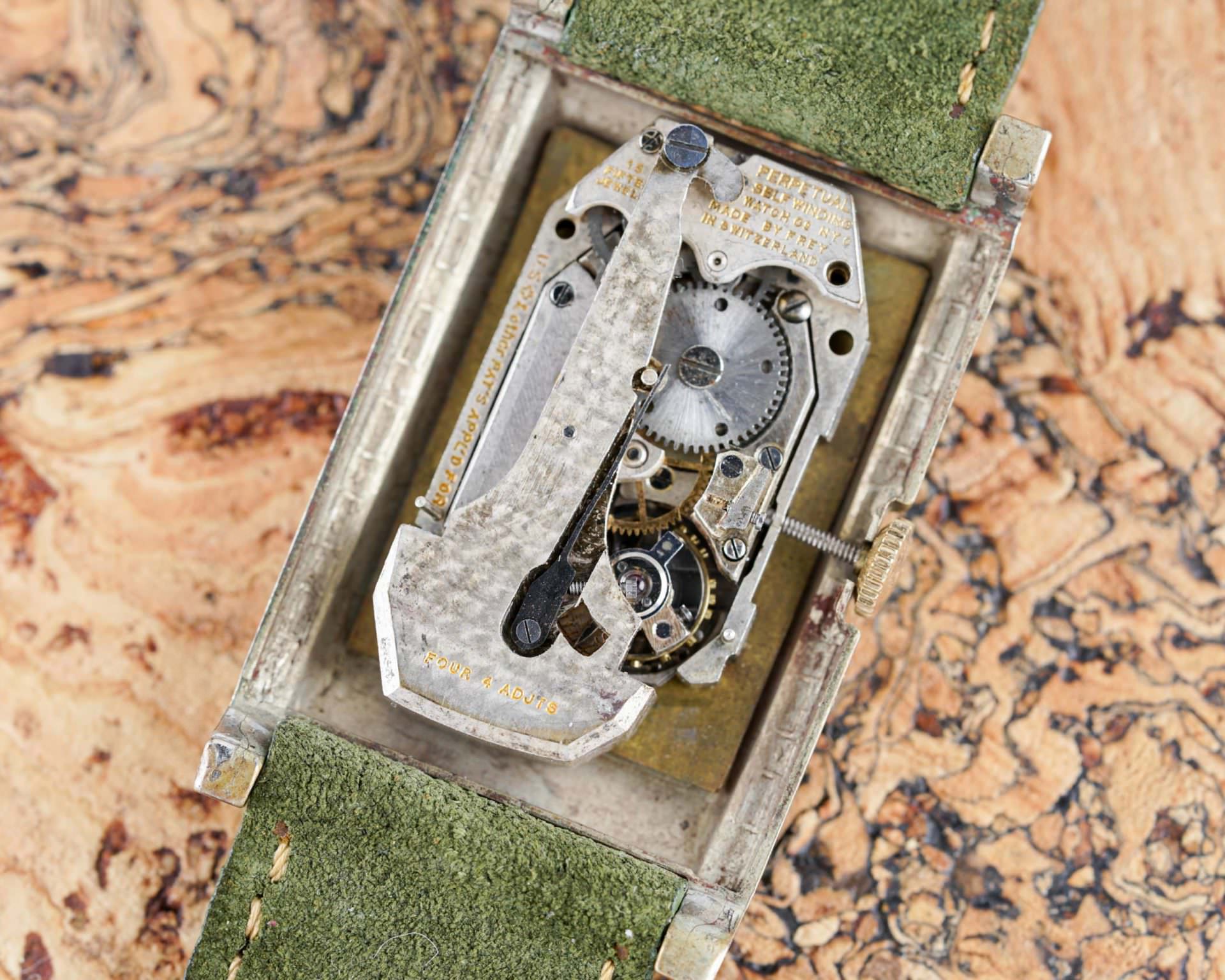
Up first might be one of the worst-imaginable designs for a self-winding wristwatch, and you don’t have to be a watchmaker to understand why. Attached to a commonly-used base caliber is a winding mechanism that includes an enormous pendulum, which is larger than the rest of the entire movement! As a whole, this design appears to be somewhat related to the early self-winding pocket watches that relied on side-weight movements, but the proportions and orientation of this particular design make it entirely impractical for a wristwatch.
Having the pendulum mounted all the way at the far end of the movement puts a significant amount of strain on its rotation point, and the sheer size of the pendulum itself guarantees that it will have quite a bit of force whenever it moves. The only thing stopping the pendulum from smashing into the sides of the case are two metal pins attached to either side of a bridge surrounding the mainplate, and both have been severely bent over the years from having the massive weight of the pendulum repeatedly crash into them. Lastly, given that both the watch and movement are rectangular in shape, the movement of the pendulum is quite limited in terms of the arc of its rotation, making it rather inefficient when it comes to actually winding the watch.
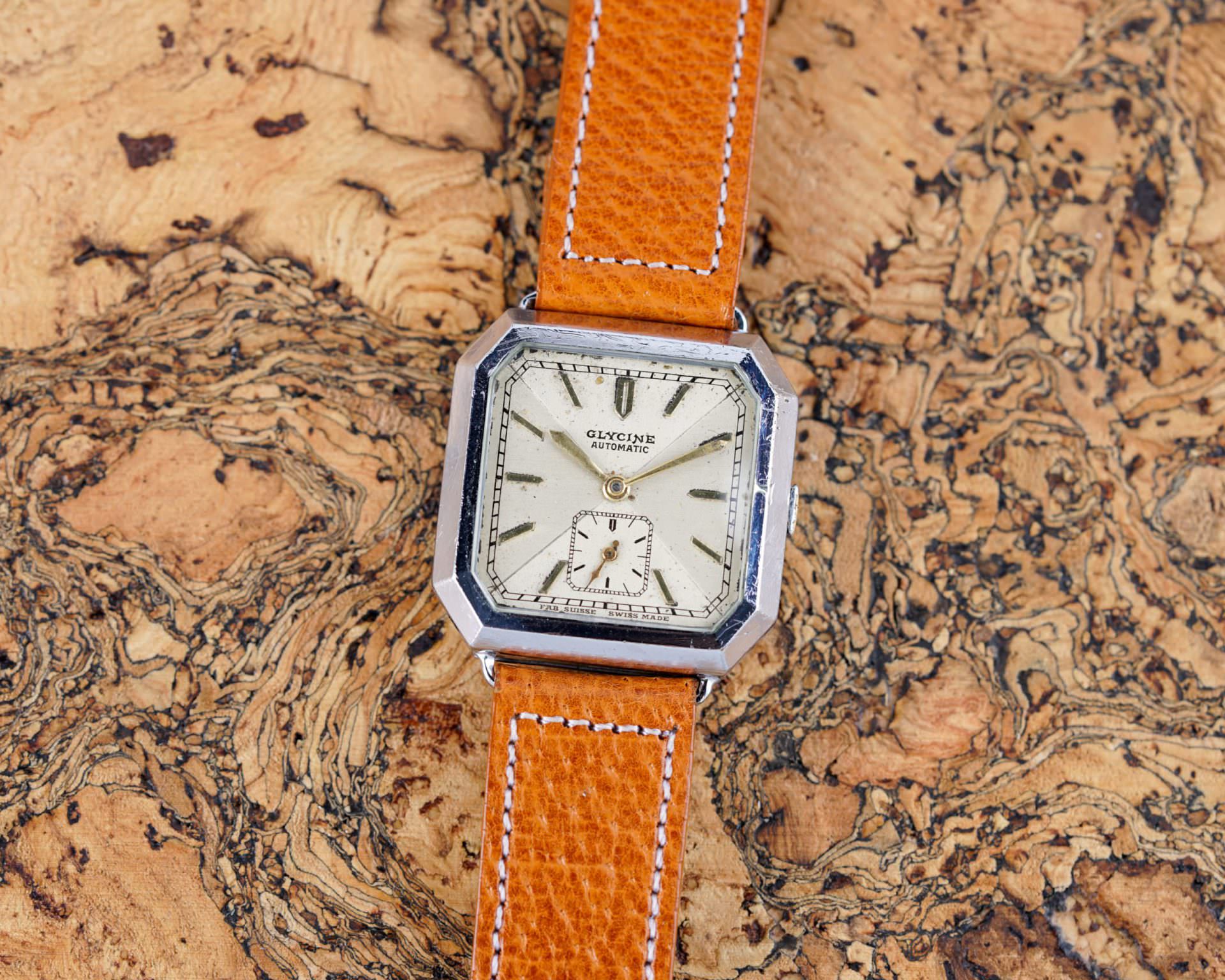
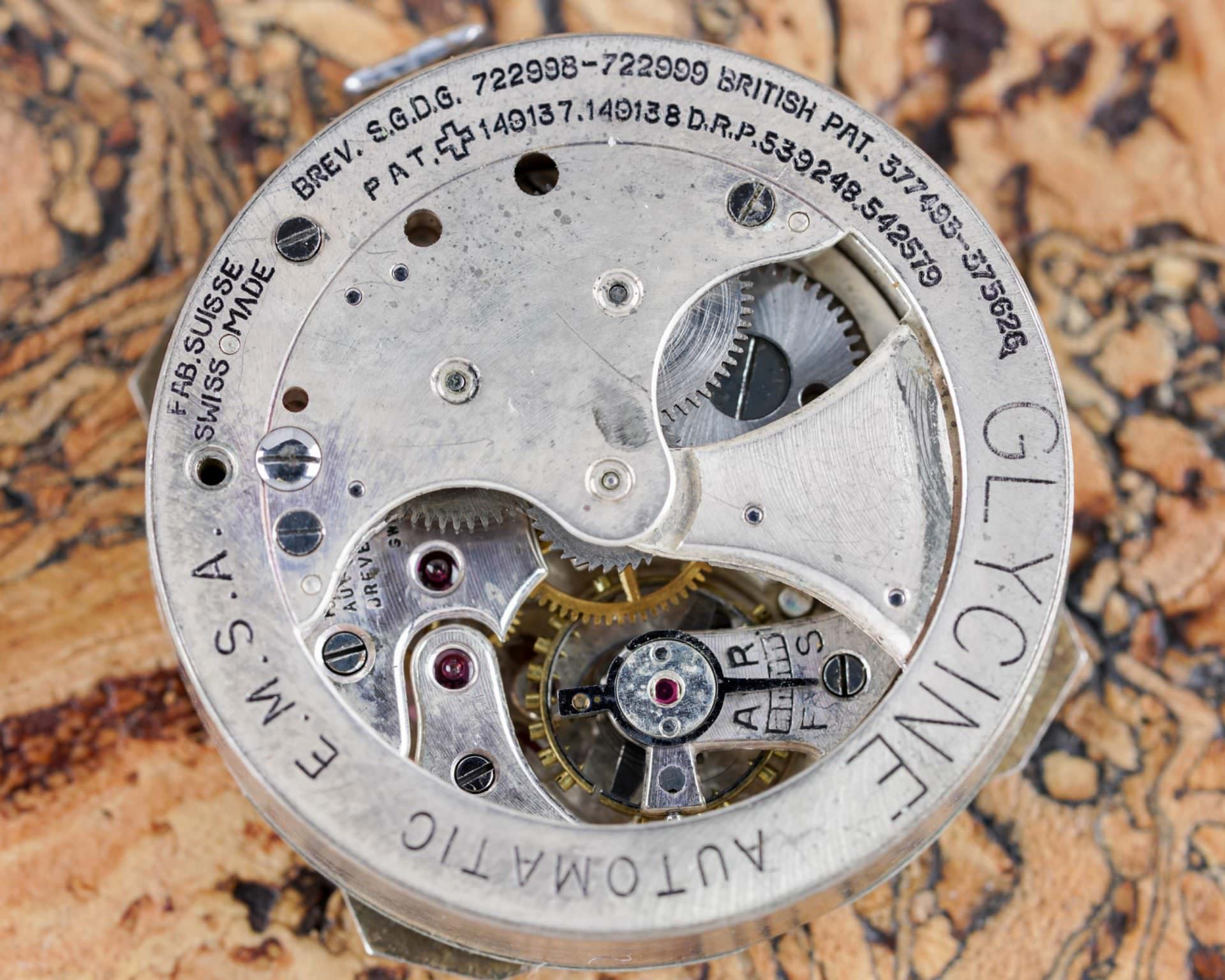
All things considered, this vintage Glycine movement could be a lot worse – but it is still a long way from ideal. At first glance, the design looks rather robust and intentional, but when you start looking at the actual mechanics behind it, it relies on a number of problematic things to function.
Like most early automatic movements, this one from Glycine starts with a relatively common base caliber that has a large self-winding mechanism attached to it. However, its circular shape and centrally-mounted pendulum are able to offer a greater range of rotational movement and improved efficiency. Additionally, the outer rim of the self-winding module surrounds the entire perimeter of the base caliber, creating a track for the centrally-mounted winding weight that offers additional support.
Where things start to fall apart with this design is the way that the movement stops the motion of its winding mechanism: Rather than having some type of cushioning system, the edges of the pendulum simply smash into the sides of the winding mechanism bridges whenever they reach the end of their directional journey. This type of metal-on-metal contact is inherently problematic for small mechanical items such as watch movements, and this approach will ultimately result in a timepiece that requires service and repairs more often.
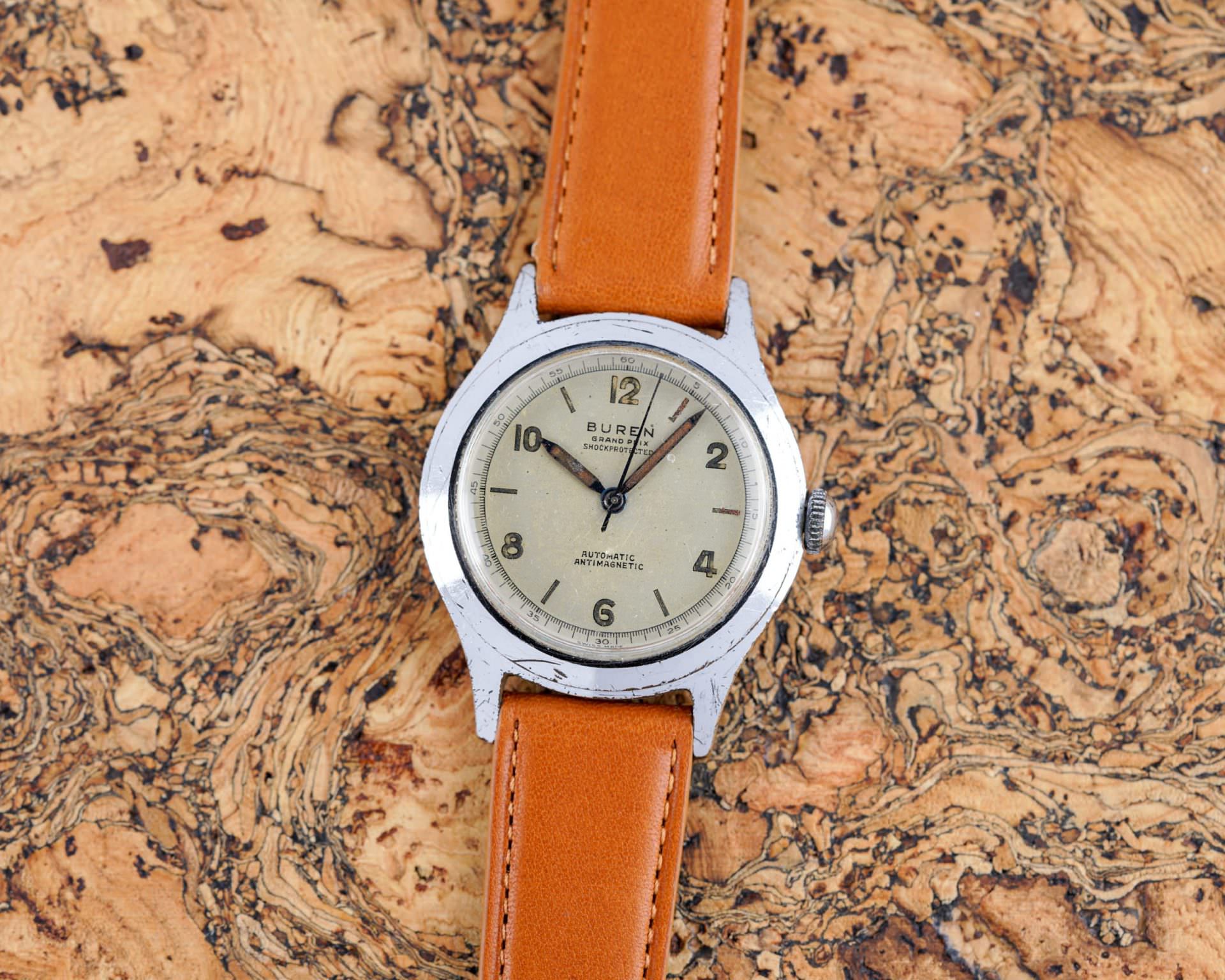
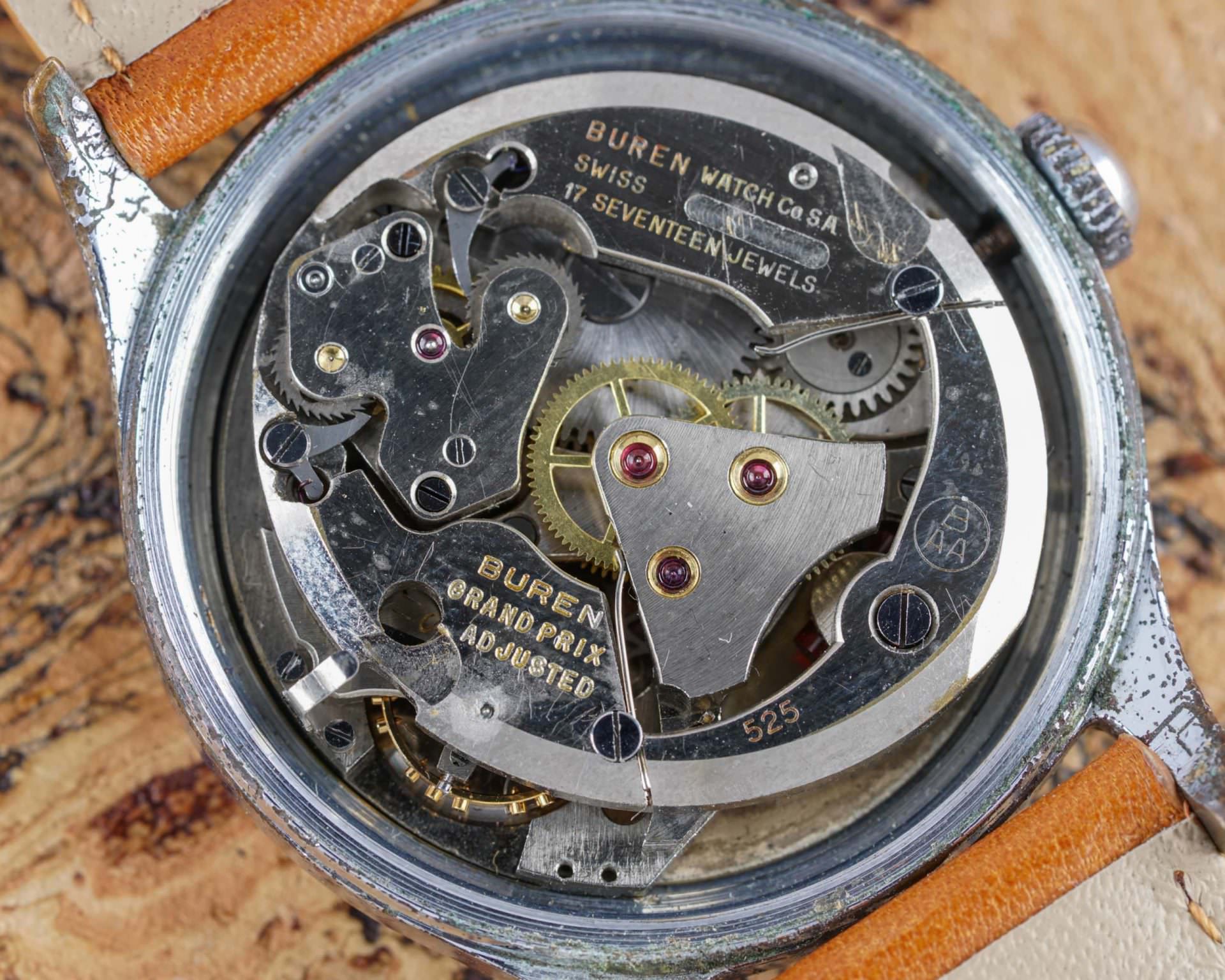
Among all of the obscure and unsuccessful bumper-style automatic movements, the Buren caliber 525 is probably one of the more well-documented ones. Created during the mid-1940s, Buren’s cal. 525 movement was abandoned by the end of the decade because its self-winding mechanism was ultimately not efficient enough for real-world use. When you look at the design of the Buren 525, it is easy to see exactly why this was the case.
The overall layout of the movement is what could be best described as a side-wight bumper caliber, although it has a number of unique and unusual design elements. A large U-shaped structure takes the place of a pendulum on the Buren cal. 525, and this multi-component winding structure occupies an area that is nearly as large as the width of the movement itself. At the opening of the U-shape is a pair of pawls that engage the gears to wind the watch, while two leaf springs attached to the winding structure cushion its impact against the sides of one of the bridges.
However, the downfall of the Buren caliber 525 was its lack of winding efficiency, and when you actually look at how little its U-shaped winding structure is able to move, it immediately becomes apparent why this automatic caliber was labeled inefficient. The side-mounted nature of the Buren cal. 525’s winding mechanism, combined with its incredibly wide diameter, results in a very small range of movement and ultimately poor winding efficiency.
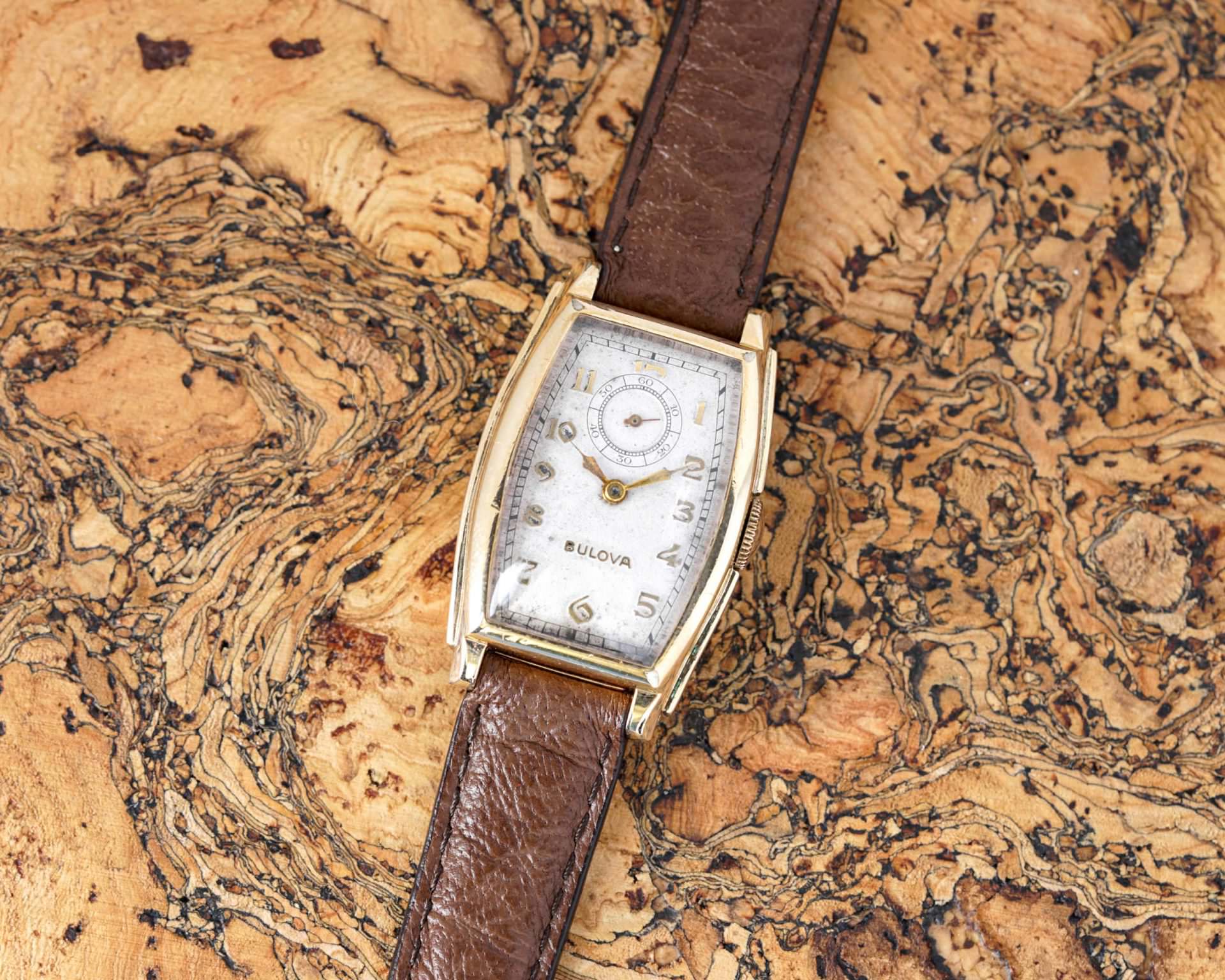
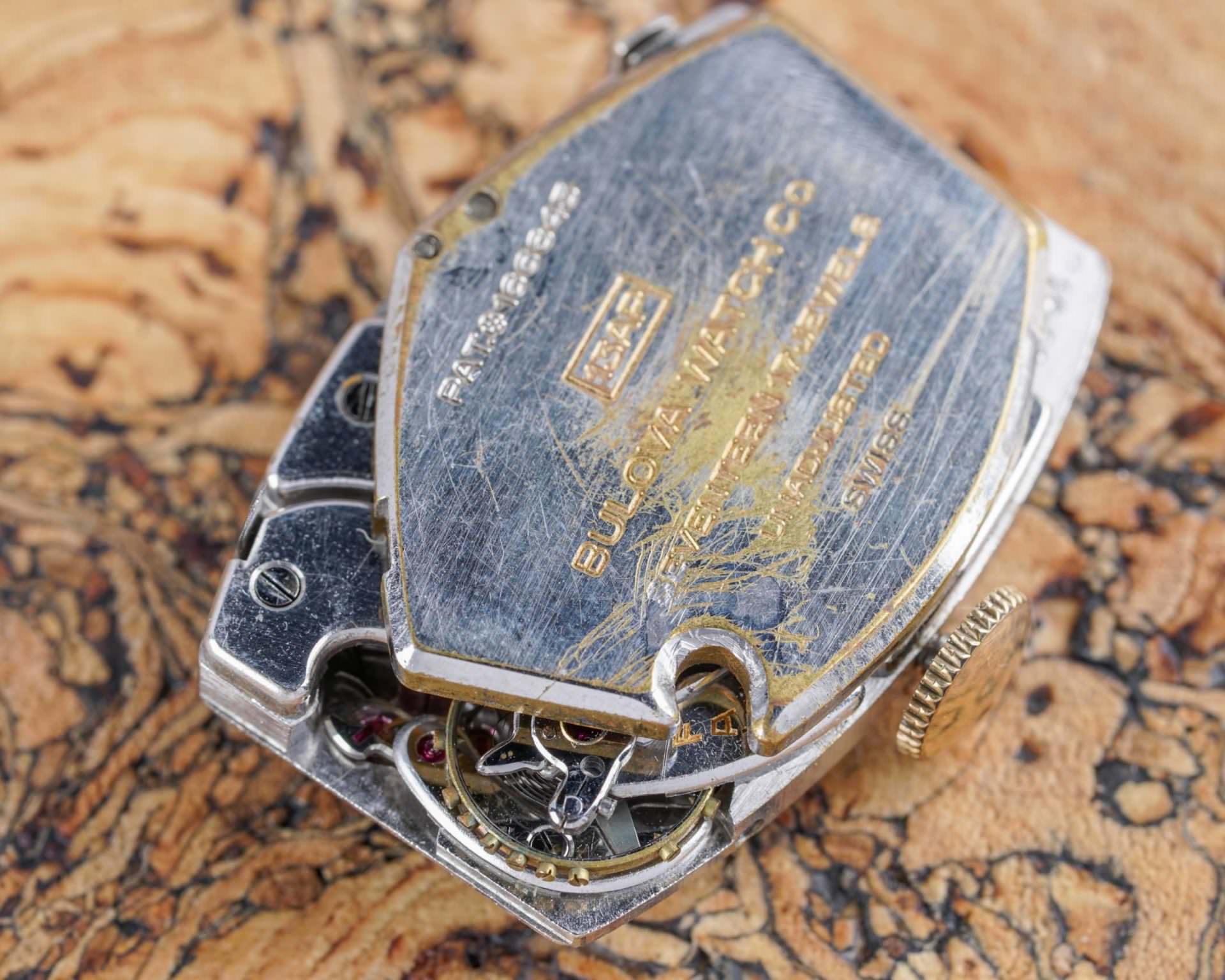
This Bulova cal. 13AP is another example of a bumper-style movement from the 1930s that features a large side-mounted winding weight. Just like most of the other early self-winding movements that follow a similar approach, the Bulova 13AP suffered when it came to longevity and overall winding efficiency.
The winding weight itself is huge in comparison to the rest of the movement, and its range of motion is rather small due to its wide shape and side-mounted orientation. Additionally, while the size of the weight is large, the axle that supports it is incredibly small and its placement at the far edge of the winding mechanism puts a lot of strain on this small and vital connection point.
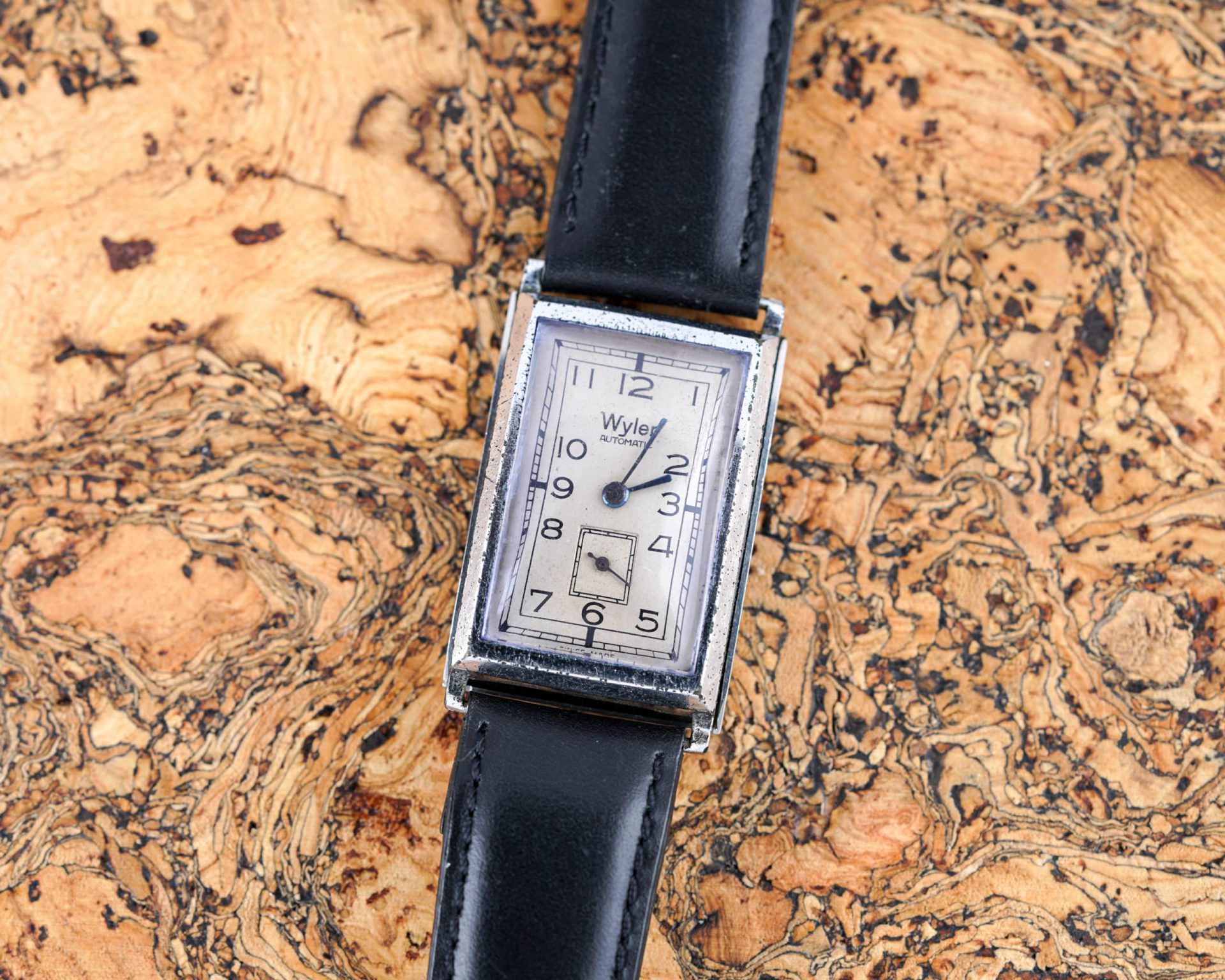
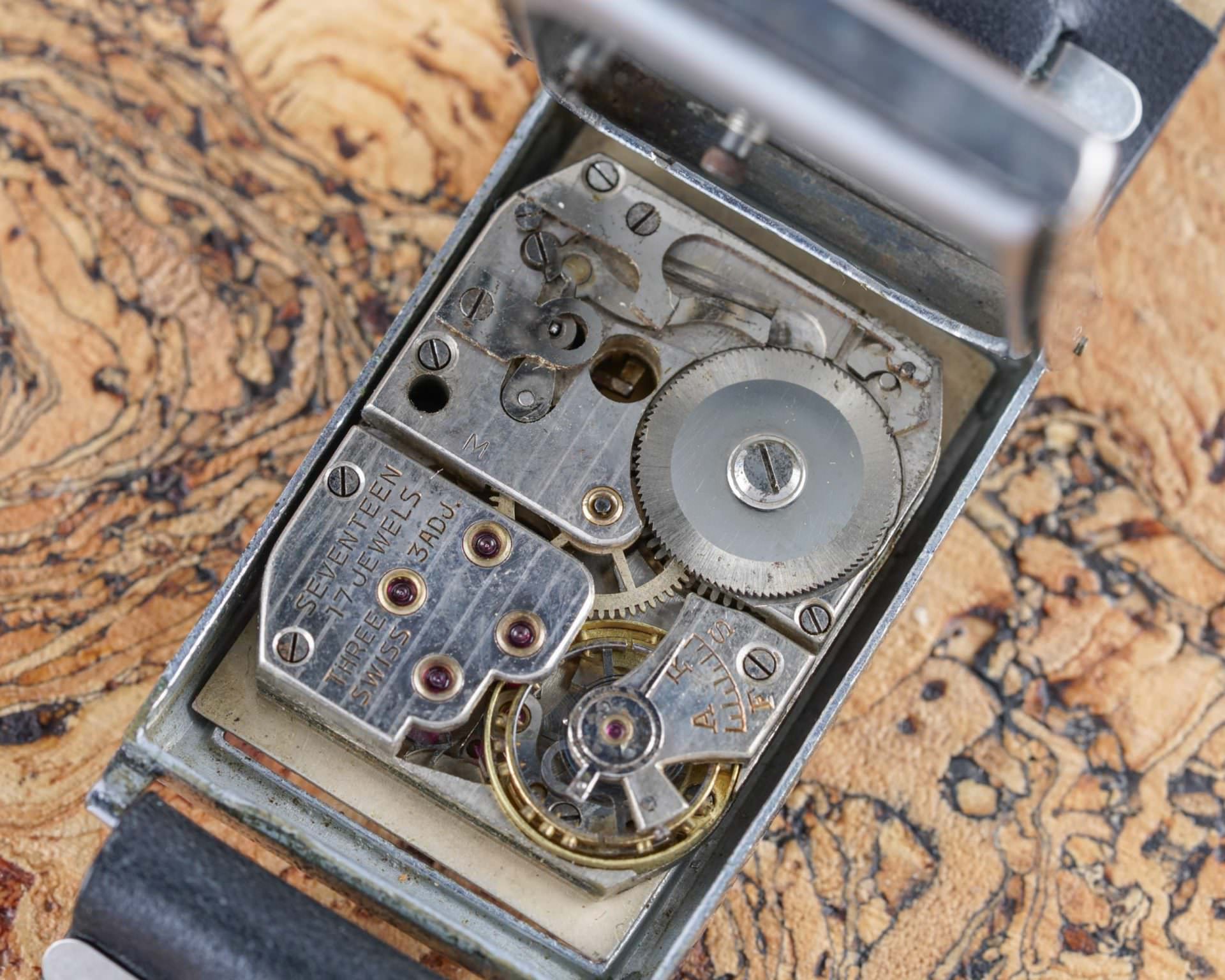
Rather than using some type of rotor or pendulum-operated mechanism, this pump-wind Wyler movement uses a hinged case structure to wind its mainspring. As unusual and charming as this approach may be, it also suffers from a lack of efficiency and it’s easy to see why this design never became popular among self-winding watches
The mechanism works by having two casebacks that are hinged at one end and open at the other (like a clam shell). Protruding from the inner caseback (the one that protects the movement) is a tiny pin that gets depressed by the adjacent surface of the outer caseback when the watch swings back-and-forth on its partially hinged case. As the pin gets depressed, it engages a series of levers that slowly winds the movement.
While you have to applaud this approach for its innovative thinking, most gestures one makes with their arm may generate enough force to move a rotor or pendulum, but only significant gestures will create enough force to depress the tiny pin on this style pump-wind movement. This means that in order to take advantage of this style of winding mechanism, you will more than likely have to periodically press down or poke your watch while it is on your wrist.
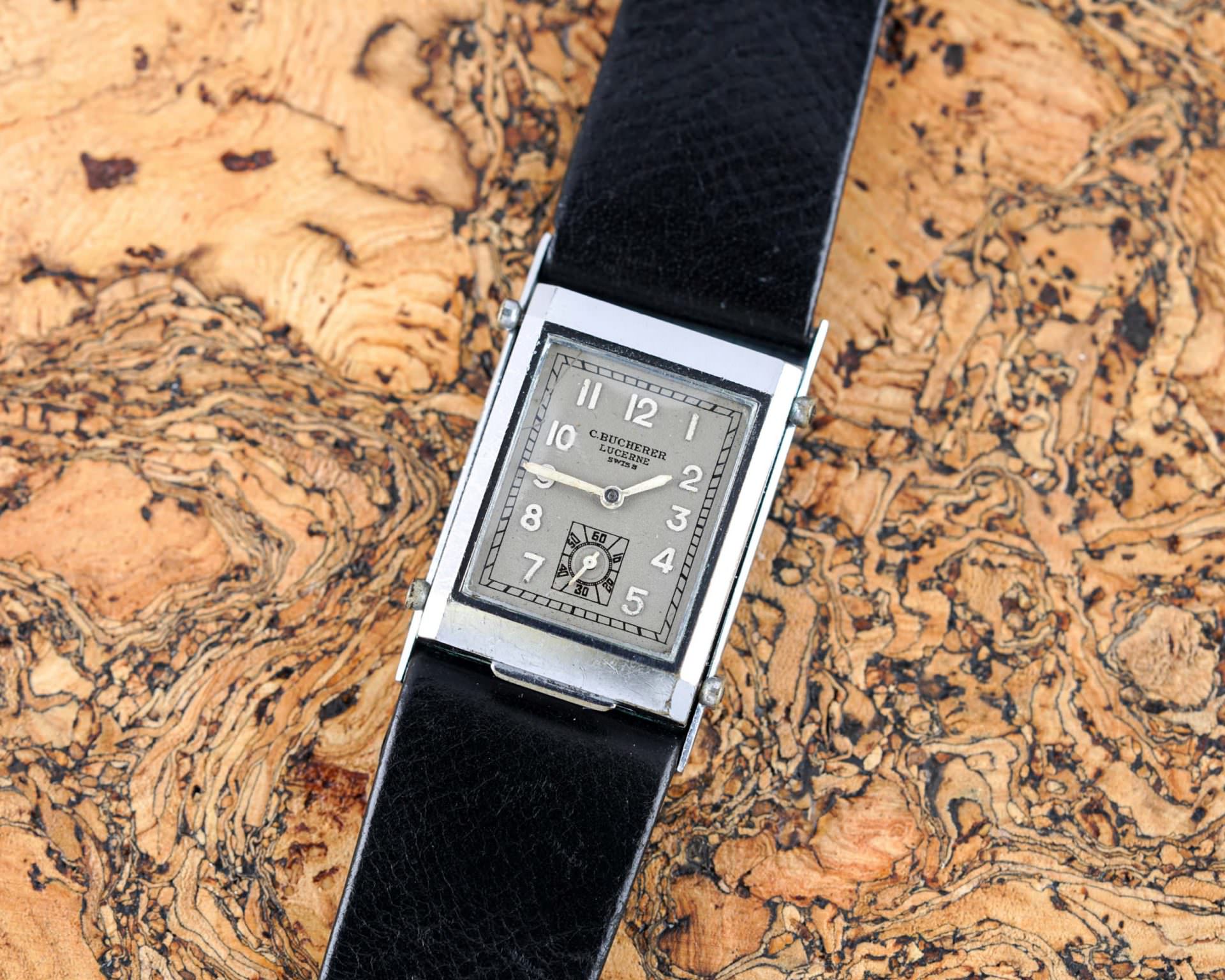
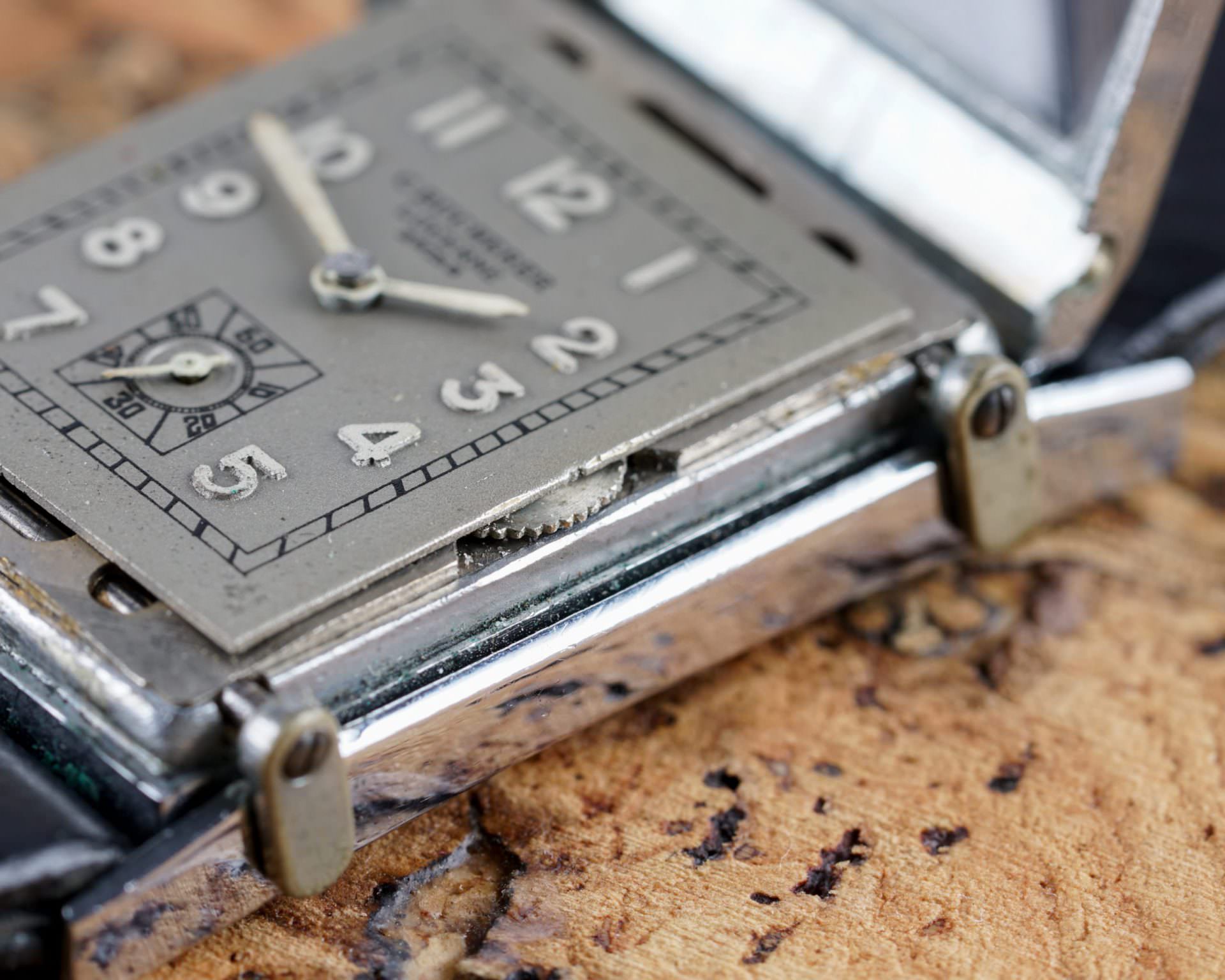
Similar to the Wyler timepiece above, this example from Bucherer uses a unique dual caseback structure as part of its automatic winding system. However, rather than being hinged at one end like a clam shell, the two casebacks have parallel hinges on both sides in a manner that allows the watch to slide up and down against its secondary caseback. As the watch moves up and down, a small gear protruding from the inner caseback is turned by a lever on the adjacent surface of the outer cashback, and this action winds the movement in the process.
One of the biggest issues with this method is efficiency. Since the exterior of the watch itself has to be moving during the winding process, the total range of motion is minimized relative to what is possible with a centrally-mounted rotor or pendulum system. Additionally, given that the watch more-or-less wobbles back and forth on your wrist as a means of winding itself, it’s an unwieldy and unpleasant design to wear daily.


The overall design and structure of this vintage Laco movement resembles something similar to what you will find inside a lot of other bumper-style automatic watches. All things considered, the core approach of this movement isn’t terrible, but it is still a long way away from the rotor-based mechanisms used in more advanced self-winding movements.
The centrally-mounted winding weight offers a decent range of rotation compared to more primitive side-weight movement designs, and this translates to a greater degree of winding efficiency. Additionally, a pair of coiled springs are used to dampen the motion of the pendulum, which represents a significant improvement compared to the less refined approach of using metal rods or the bridges of the movement to absorb the force of the impacts.
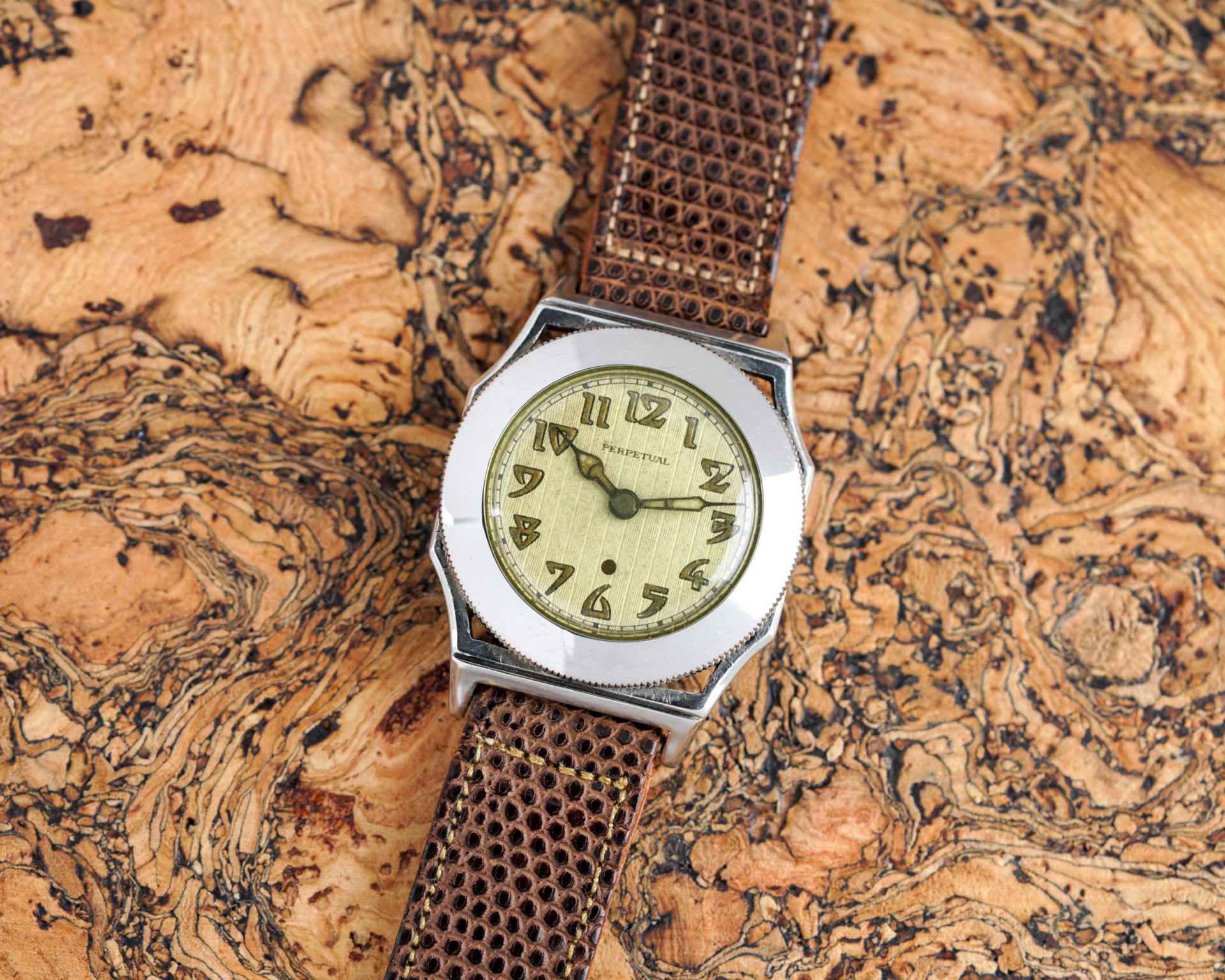
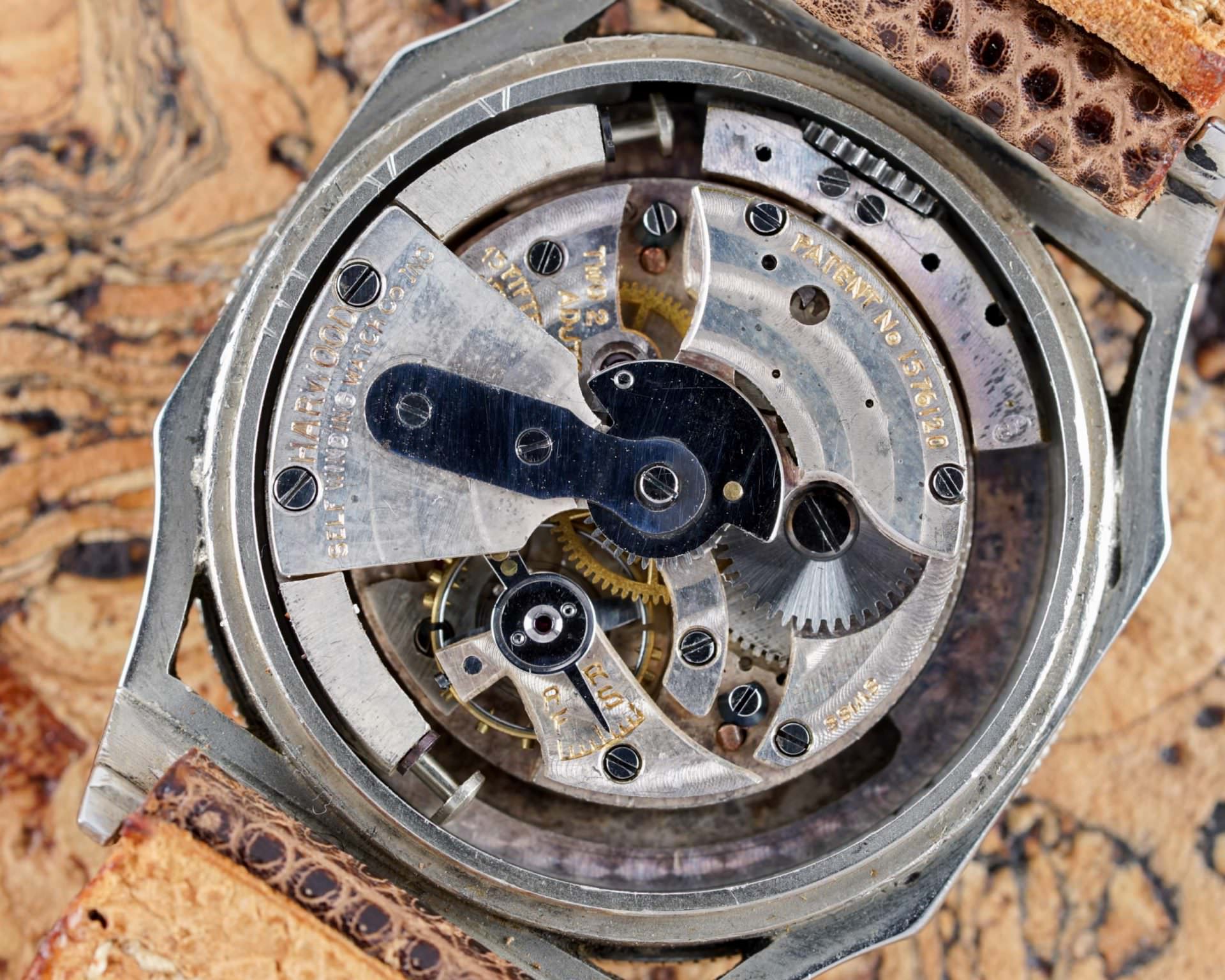
Although we often think of Rolex as the creator of the automatic wristwatch, that title actually belongs to John Harwood – a watch repairer from England who received a patent for his design in 1923. Rolex’s “Perpetual” movements didn’t come out until 1931, meaning that it was actually Harwood’s style of bumper movements that powered the first commercially successful automatic watches.
Harwood’s design served as the foundation for many of the bumper-style movements that were successfully used throughout history, and their shared DNA is immediately apparent. A centrally-mounted pendulum is used to wind the watch, but rather than using springs attached to a fixed stopping point to dampen its impact, small bumpers were attached to the ends of the pendulum itself.
Probably the most interesting thing about watches with these early Harwood bumper movements is that they do not have any crowns protruding from their cases! Winding is done exclusively through the automatic system, and any adjustments to the hands are done by rotating the external bezel. The reason for this unique approach is because John Harwood recognized that winding crowns were typically the most vulnerable components on watches, so he went about designing a movement that could enable a wristwatch to simply not have one. With that in mind, bumper-style movements are still inherently less efficient than self-winding mechanisms that a
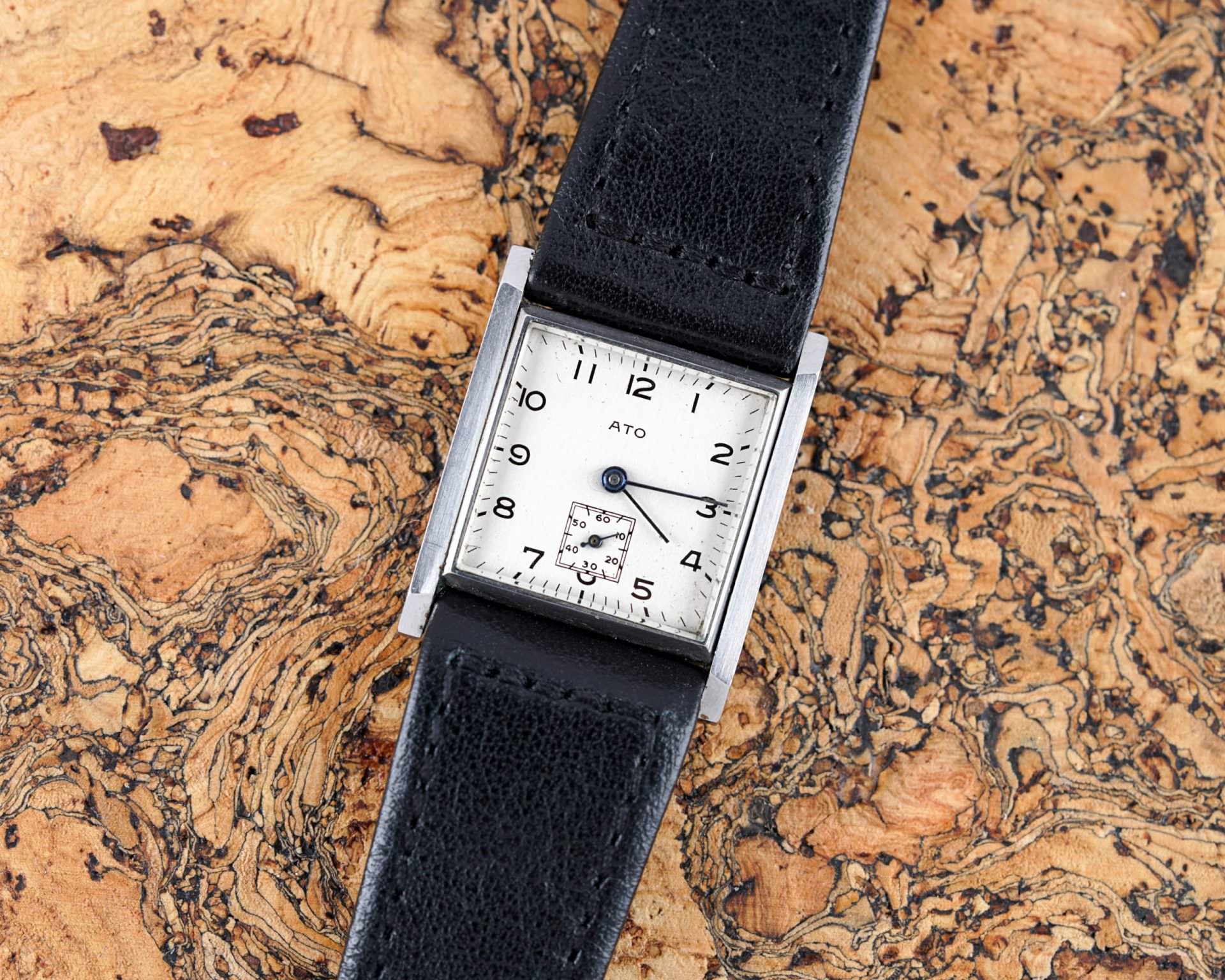

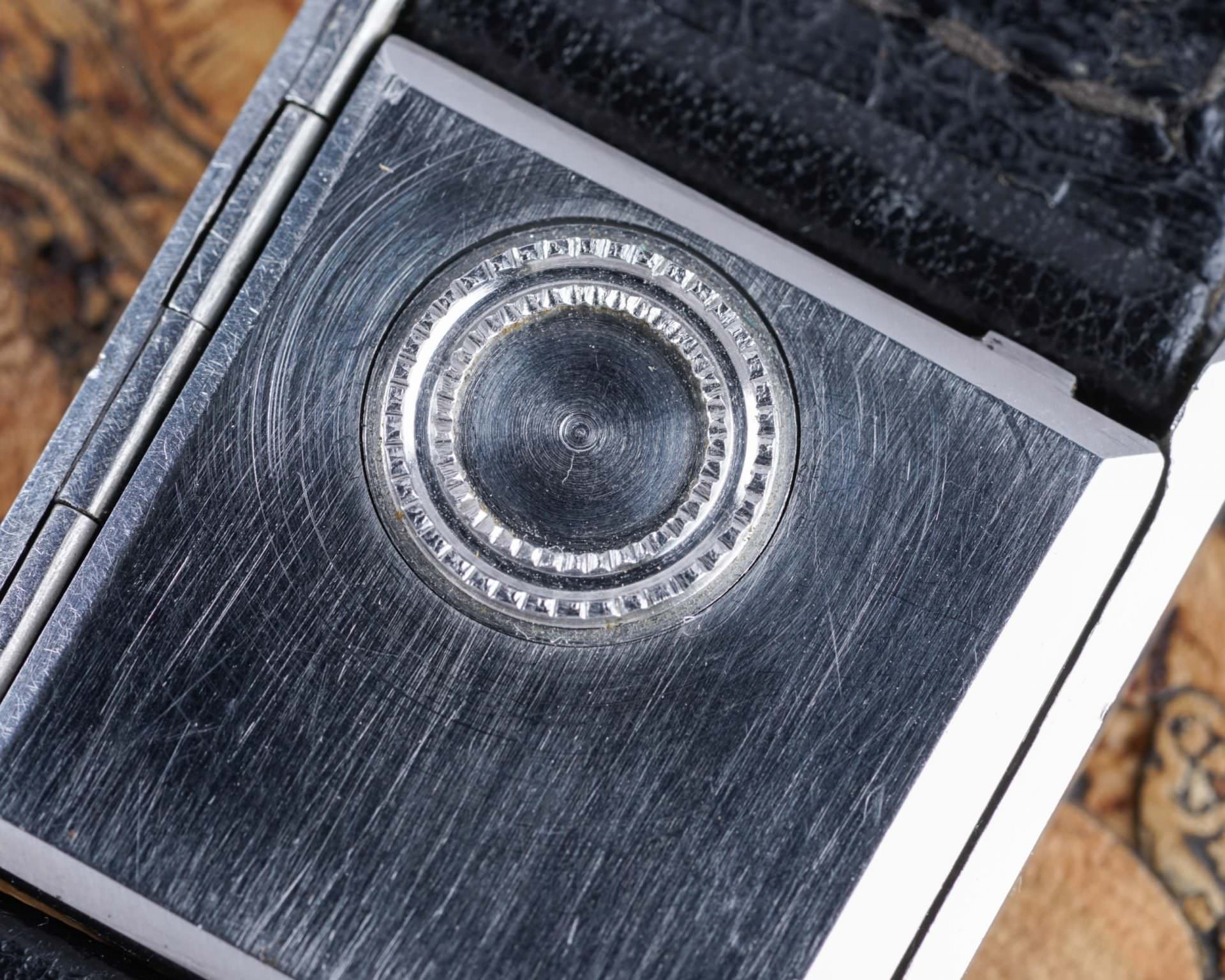
This last one isn’t exactly a self-winding movement, but represents an interesting approach to a traditional manual-wind layout and is still an incredibly unusual design worth highlighting alongside these early automatics.
Rather than winding the watch with a traditional winding crown, adding tension to the mainspring is done by turning a textured disc located on the caseback of the watch. Additionally, setting the time is done by pressing down on the right-hand side of the case, which folds down to reveal a small hidden gear that can be turned to adjust the hands.
At the end of the day, none of these early attempts at self-winding movements really came close to matching the efficiency of today’s modern rotor-based designs. However, each one holds its own fascinating place within the history and development of the automatic wristwatch, and looking at them together makes it painfully clear why none of them prevailed as the go-to design for the self-winding watch. And how often do we get such a close and comprehensive look at the virtual evolution of automatic wristwatches in-the-metal like this?


Check out 'Reference Tracks' our Spotify playlist. We’ll take you through what’s been spinning on the black circle at the C + T offices.

Never miss a watch. Get push notifications for new items and content as well as exclusive access to app only product launches.
Sign up for our newsletter to receive updates and exclusive offers